There are only two ways to live your life. One is as though nothing is a miracle. The other is as though everything is. - Albert Einstein
Martin of Tours, whose sainthood was generously bestowed upon him for slicing his gorgeous red military cloak in two and offering half to a poorly clothed vagabond in the dead of winter way back in the 4th century is not the subject of this post.
His donkey is.
Yes, his donkey who, according to local legend in my part of France, taught the peasants how to trim their grapevines in order to produce the most luxurious bounty of fruit for their wine. Martin, of course, is said to have introduced both the vine and winemaking to the Tourangeaux, the folks of the region of France around Tours, and diffusing this new wine culture across the region in which it previously had been forbidden. To this day, St. Martin is closely connected to winemaking and is fêted on his feast day of November 11 in many regions, not only in France but a few other countries as well, a day of sharing and tasting the newest production. November 11 commemorates the day in 397 AD when Martin was buried in Tours, 2 days after his death when his body, along with the bed his body was reposing on, was stolen from his cell in the collegial church in Candes (now Candes-Saint-Martin) through a window, in the dead of night, by the Tourangeaux and carried off to Tours.
The story I want to tell is quite a simple one about how our good Samaritan and his faithful companion are they themselves saved by good Samaritans and to thank them, this saintly man performs a miracle. In this case, a culinary miracle.
Saint Martin traveled from place to place, village to village, to preach the good word to peasants, farmers, and winemakers. One evening, according to the legend popular in the region of Tours, he and his donkey were strolling along the edge of the hillside planted with vines when they were suddenly caught in a huge storm. Without warning, the stream along which the two were walking rose up and overflowed, catching Martin and his donkey in a flood of water sweeping along the narrow path. Man and beast would surely have drowned if it wasn’t for the peasants who witnessed what happened and ran and pulled them from the raging waters, saving their lives.
Another version has Martin up in Dunkirk, then a small fishing village on the coast of Flanders, in the north of France, spreading the gospel. As he tried to evangelize the fishermen and their families, his poor, bored donkey wandered off in search of a good place to graze (remember his chomping on the grapevines?). As night fell, a panicked Martin realized that his donkey was gone, had wandered off and not returned. All the children of the village ran off in search of the poor, lost beast, eventually finding him grazing on the thistles that grew on the dunes along the water. The children happily led the donkey back to Martin.
In both legends, Martin wants terribly to thank the good folks, the kind children for saving his donkey but, being a poor man, he had nothing to offer them. And so he performed a miracle, transforming the donkey’s droppings - yes, his droppings - into delicious little sweet breads or brioches, les croquendoules - or, in Flemish (Belgium, Holland, and the north of France), les follards or voolaerens.
These wonderful little treats are still eaten today to celebrate Saint Martin on his feast day. It’s enough to believe in miracles.
Croquendoules : Saint Martin’s brioche
Delicious little brioches, sweetened with sultanas, dried blueberries, or mini dark chocolate chips, are best eaten fresh from the oven.
8 grams (scant 2 ½ teaspoons) active dry yeast (dried levure boulangère)
1/4 cup (50 grams) sugar
1 cup (250 ml) milk, whole or low-fat (not non-fat/skim), warmed to body temperature
3 ½ cups flour (500 grams) + ½ cup (70 grams) for kneading (*see note)
1 teaspoon salt
2 to 3 heaping teaspoons sultanas, dried blueberries, or mini dark chocolate chips
2 large eggs, lightly beaten just until well blended
7 tablespoons (100 grams) butter, cubed and softened to room temperature
1 egg yolk for glazing
(*note: stir the flour in the flour bag or container to lighten then lightly spoon the flour into the measuring cup until mounded over the rim; using a flat blade, level the top of the flour. Do not tap the cup on the work surface and do not scoop the flour with the measuring cup; both of these will increase the amount of flour in the measuring cup.)
Put the active dry yeast and 1 teaspoon of the sugar in a small mixing bowl; add the warm milk, swirl once to slightly blend, then allow this mixture to rest for 15 to 20 minutes until the yeast is activated - the yeast will be completely dissolved and the mixture foamy.
Put the 3 ½ cups (500 grams) flour in a large mixing bowl and stir or toss in the rest of the sugar, the salt, and the sultanas. Make a well in the center of the dry ingredients and pour in the yeasty milk and then the lightly beaten eggs. Using a spatula (I always recommend a scoop/spoon/curved silicone spatula), fold the dry and the wet ingredients together just a few times until starting to blend then add the soft butter in cubes, folding the mixture after each third of the butter is added only to avoid the butter clumping all together.
Begin stirring then kneading all of the ingredients for the brioche together in the bowl until the dough begins to come together and all of the dry ingredients are incorporated, then scrape the dough out onto your work surface which you have lightly dusted with some of the extra ½ cup (70 grams) flour. Knead the dough, dusting the work surface with a little more flour as needed, until the butter is completely incorporated and the dough is smooth and light. This should only take a couple of minutes and should use up the ½ cup (70 grams) flour but no - or not much - more.
Shape this dough lightly into a ball and place in a clean and lightly oiled mixing bowl, turning the dough in the bowl to make sure it is very lightly oiled all over, then cover the bowl with plastic wrap and a clean kitchen towel and allow to rest until doubled in size, about 1 hour.
Scrape the dough out onto a lightly floured work surface and knead lightly. Divide into 8 equal-sized portions of dough - I shape the dough into a round, slice this in half then each half in half again then each quarter in equal halves. Working one piece at a time, shape each ball of dough into a slightly elongated oval then gently pinch each end to make 2 “heads”, one on each end - your elongated dough will have a large rounded section in the middle “body” flanked by 2 smaller rounded “heads”.
Place each croquendoule on a parchment-lined baking sheet. When all the croquendoules have been shaped, lightly cover them all with plastic wrap (and the clean kitchen towel, if you like) and allow to rise again for 1 hour.
Preheat the oven to 350°F (180°C).
Remove and discard the plastic wrap from the risen croquendoules and using a pastry brush (or your fingers) lightly brush each all over, top and sides, with the egg yolk.
Place in the preheated oven and bake for 20 to 25 minutes until a beautiful deep golden and the brioches are risen.
Thank you for subscribing to my Substack, Life’s a Feast by Jamie Schler, where I share my recipes, mostly French traditional recipes, with their amusing origins and history. I’m so glad that you’re here. You can support my work by sharing the link to my Substack with your friends, family, and your social media followers. If you would like to see my other book projects in the making, read my other essays, and participate in the discussions, please upgrade to a paid subscription.



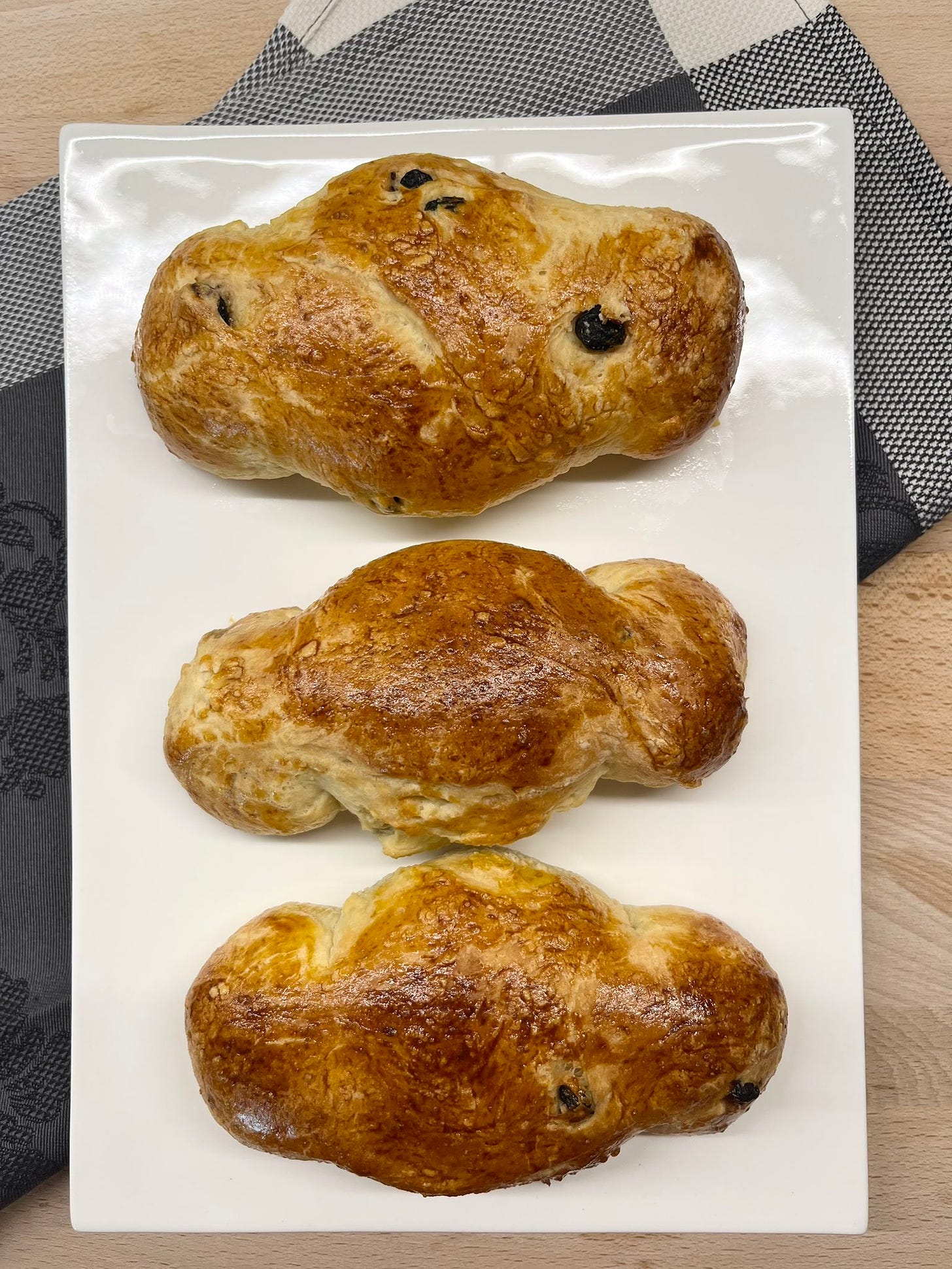
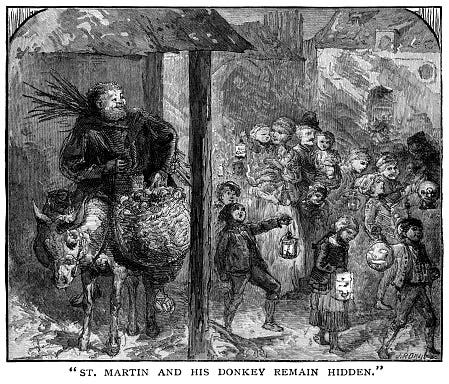

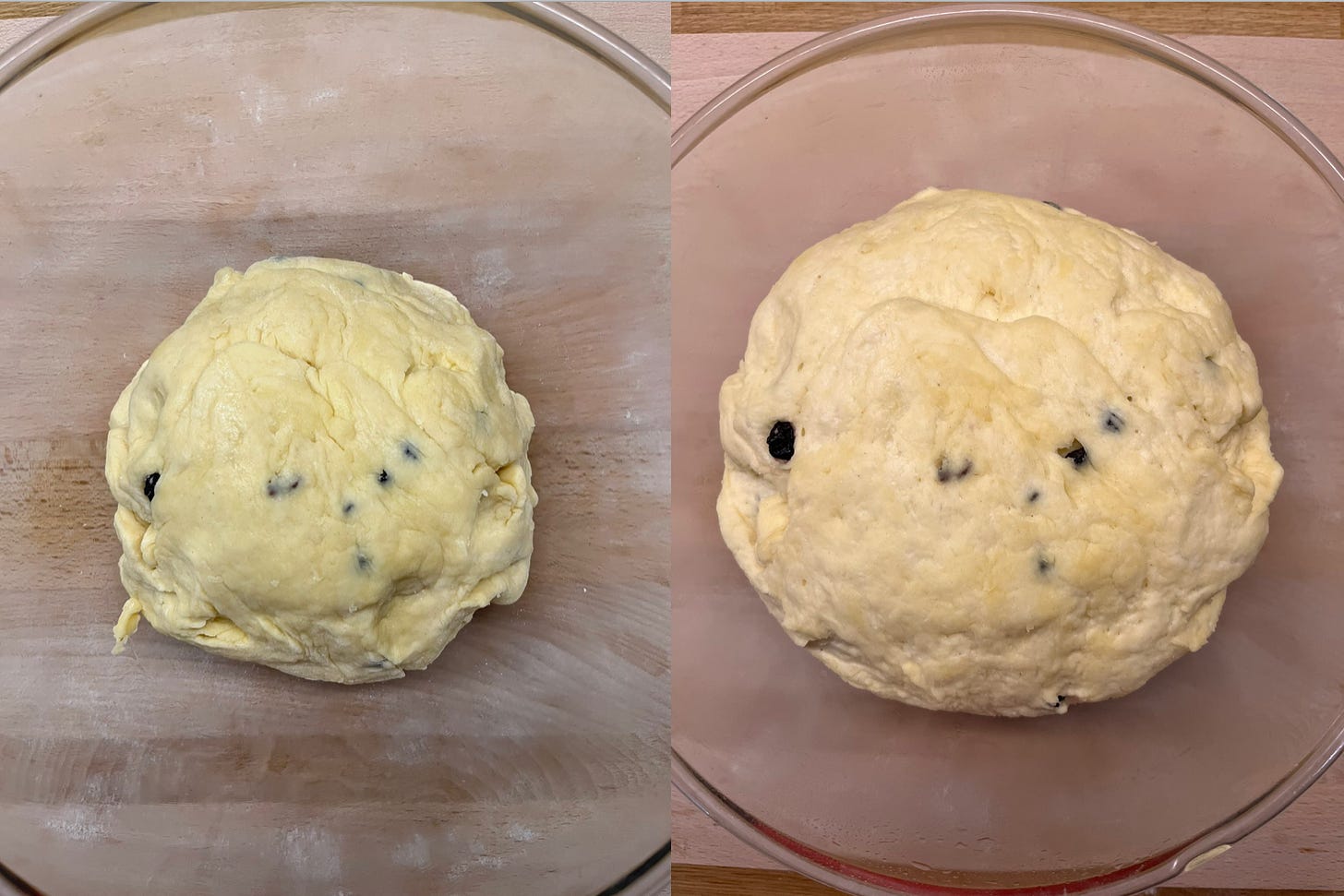
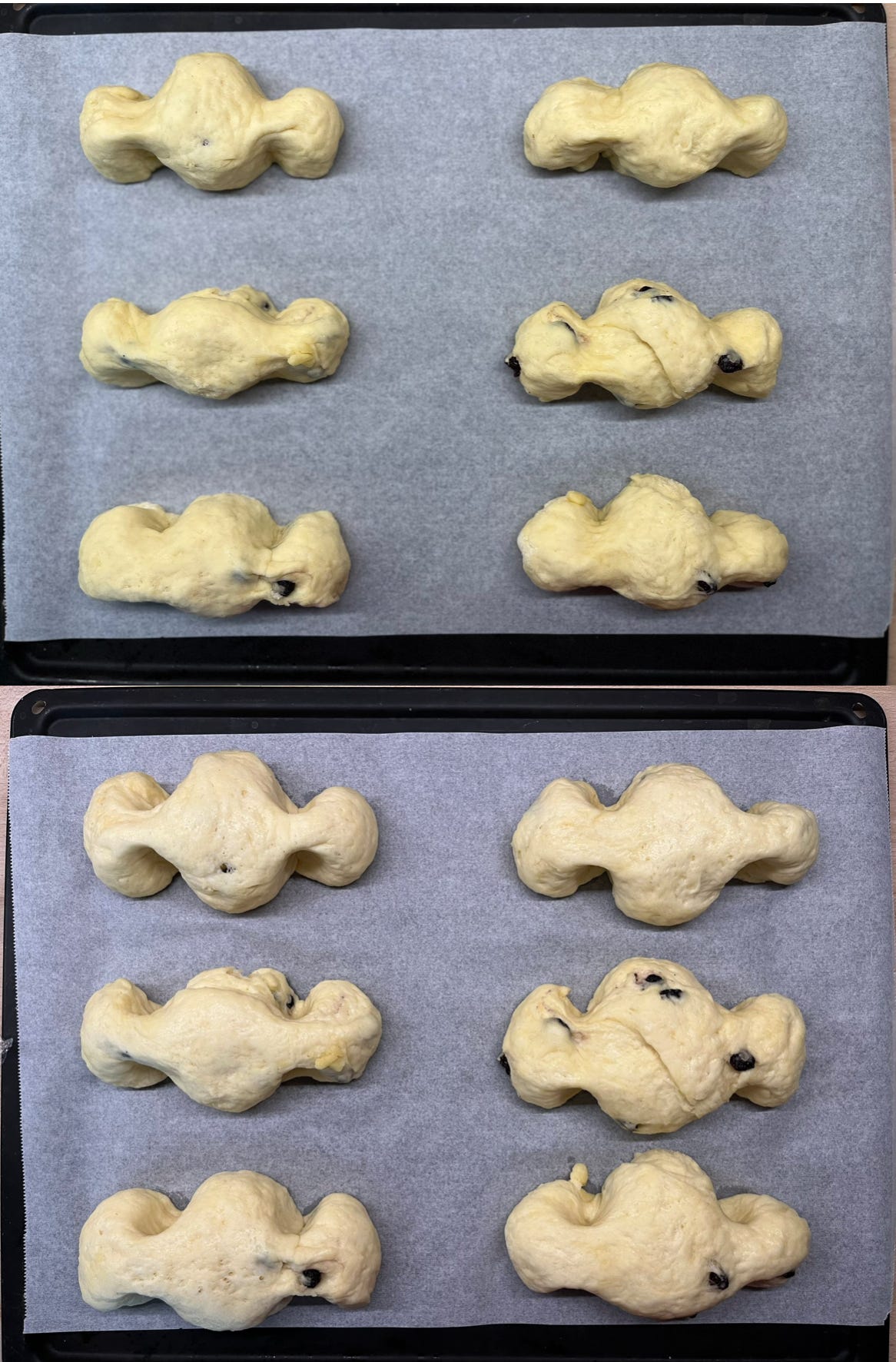

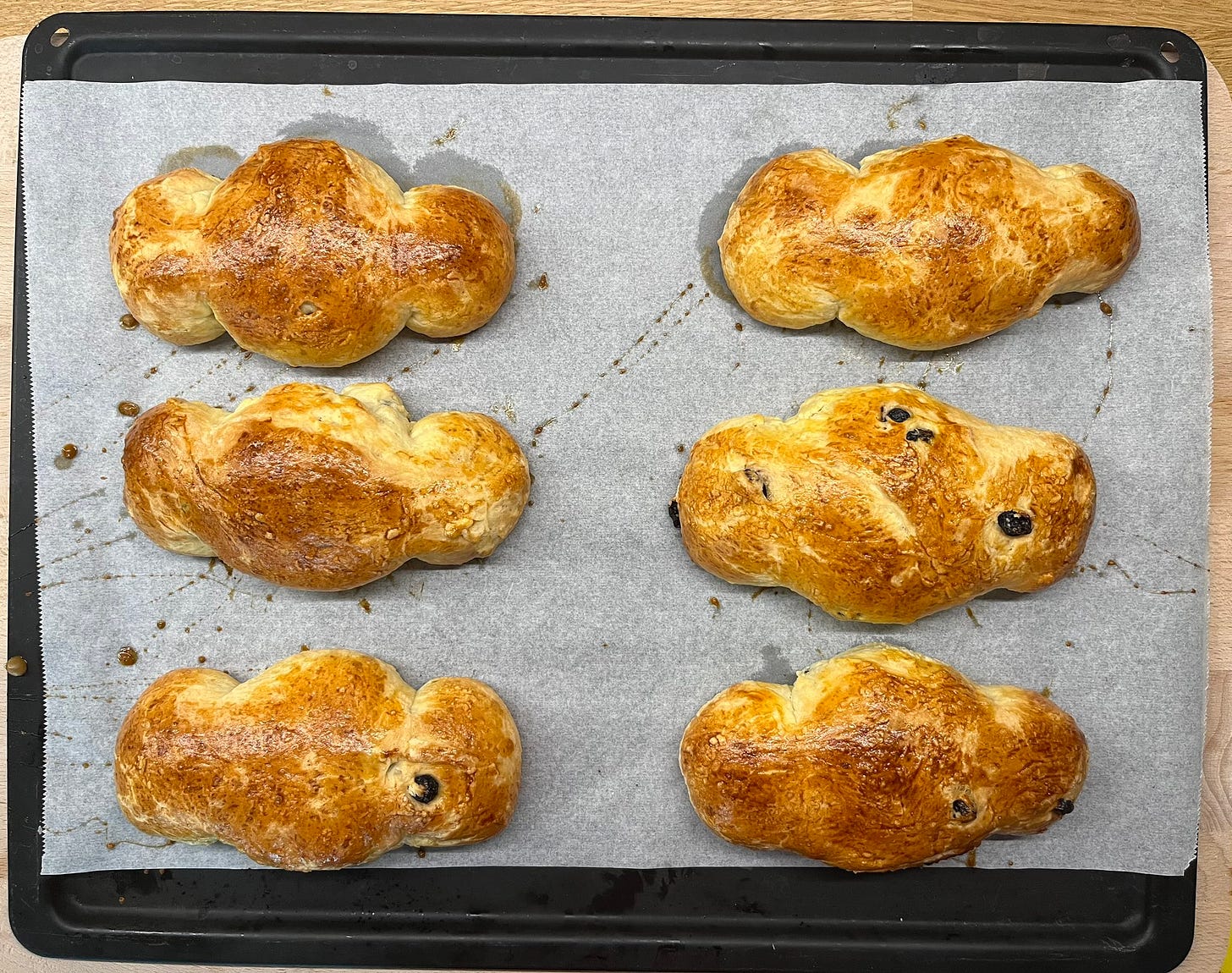
Oh this is the best story! I love the stories of these saints and their miracles. And who doesn't love a little warm brioche?
Thanks once again, Jamie.
And here I thought donkey droppings were only good for fertilizer.